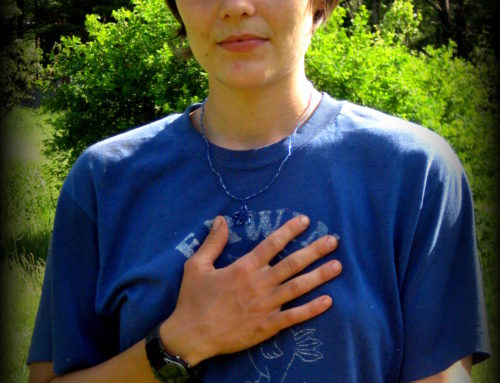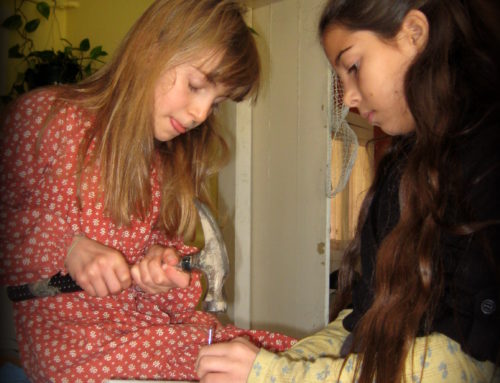Distinguishing Needs from Strategies
Something I’ve been studying and working with for many years is something called “Nonviolent Communication” or NVC, which some of you may be familiar with. I struggle with this name as I don’t believe that either the Nonviolent or the Communication piece really articulates what it’s about. My working explanation for Nonviolent Communication goes like this:
Nonviolent Communication is not only a language and process for expressing ourselves and hearing others, it is also a way of shifting our understanding of life and of human behavior. NVC gives us the tools to understand what triggers us, to take responsibility for our reactions, and to deepen our connection with ourselves and others creating greater possibility for harmony and satisfaction.
One of the things about NVC that I’ve come to deeply appreciate and find to be an incredibly powerful tool, is the distinction between needs and strategies.
What about needs?
 At the heart of Nonviolent Communication are our needs and values: qualities that connect us all as people and that as human beings we all share. Qualities that when present enrich and enhance our lives and when not present detract from our experience. These are such things as our basic survival needs like nourishment, warmth and safety but also include such needs as care, understanding, respect and autonomy.
At the heart of Nonviolent Communication are our needs and values: qualities that connect us all as people and that as human beings we all share. Qualities that when present enrich and enhance our lives and when not present detract from our experience. These are such things as our basic survival needs like nourishment, warmth and safety but also include such needs as care, understanding, respect and autonomy.
Needs are the core qualities and values we all share as human beings, they are what drive our actions and behavior. From the NVC point of view, all human behavior arises out of an attempt to meet some core basic human need. All anyone is ever trying to do is to meet their needs. Their strategies may not work so well or be problematic for others, but they are still attempting to meet their needs which are the same needs as anyone else.
What’s the difference between needs and strategies?
Strategies on the other hand are distinct from the needs they are being employed to meet. They are NOT universally applicable to human beings but are particular to circumstances people and situations. The more I separate out my needs from the strategies I think I need to meet those needs, the greater freedom, possibility and also ability engage satisfactorily with others I have. I’m continually amazed by the power of these distinctions.
The key to identifying, expressing, and connecting with needs is to focus on words that describe shared human experience rather than words that describe the particular strategies to meet those needs. Whenever we include a Person, a Location, an Action, a Time, or an Object in our expression of what we want, we are describing a strategy rather than a need. (acronym: PLATO) For example: “I want you to clean your room” May be a particular strategy to meet needs for beauty, order, support or contribution. In this case, we have a person(you), an action(Clean), and an implied time(soonish?) and location(room) in the original statement, showing us that this is a strategy rather than a need.
Why should I care about all of this anyway?…
 If we get really clear about which needs we are trying to meet, then many more strategies become available. If it’s order and beauty I’m after, perhaps I could hire someone to clean your room instead. If I have a desire for contribution, then maybe there’s other things you could do, that presumably you would enjoy more, that would be a contribution. Perhaps, I’d be willing to clean your room if you would mow the lawn, for example. All of a sudden it no longer has to be a fight about our particular strategy but we can explore other possibilities that would meet the needs we hope to meet through the strategy we are presenting, and maintain positive connection at the same time!
If we get really clear about which needs we are trying to meet, then many more strategies become available. If it’s order and beauty I’m after, perhaps I could hire someone to clean your room instead. If I have a desire for contribution, then maybe there’s other things you could do, that presumably you would enjoy more, that would be a contribution. Perhaps, I’d be willing to clean your room if you would mow the lawn, for example. All of a sudden it no longer has to be a fight about our particular strategy but we can explore other possibilities that would meet the needs we hope to meet through the strategy we are presenting, and maintain positive connection at the same time!
To me this is totally revolutionary and could solve so many disagreements and conflicts. If we get to the needs each person has in relationship to the subject at hand, there is so often a way to come up with strategies that work for everyone!
The internal shift from focusing on a specific strategy to connecting with underlying needs also often results in a sense of power and liberation. As we begin to explore the needs behind our and others behavior we are no-longer trapped into thinking we “need” things to be a certain way or that me must have a particular strategy in order for our needs to be met. We can greatly expand our world of possibility and the likelihood that while we may not get exactly what we thought we wanted, that our needs can be met.
So, how do I put this into practice?
Here’s a few things to try to help you start connecting with your needs and distinguishing needs from strategies.
In any given moment, stop and ask yourself:
what needs am I meeting by doing what I’m doing?
What needs am I not meeting?
Is there a better way to meet the needs I’m intending to meet?
Notice where in your speech you use the word need and whether or not there is a Place,Location,Action,Time or Object, attached to it….
- I need YOU, JOHN, DAD, MY TEACHER, etc (person) to..
- I need to be at SCHOOL, WORK, THE PARK, etc (Location)
- I need TO, need YOU TO (Action)
- I need to be there AT FIVE, TODAY, TOMORROW etc.
And can you identify the real need you have and the strategy you choose to use to meet that need?
…”I have a need for responsibility, I choose to be at work at the agreed upon time.”…
(I’m guessing you’ve found that many sentences in which we use the word need contain multiple aspects of PLATO.)
Let me know how it goes, what discoveries you make and if you have any questions.


Thanks, what a lovely little piece of writing! Glad to have a new perspective. Thanks.
You’re most welcome! Thanks for checking it out and I’m glad to hear it’s provided you with some new perspective.
[…] (Review Needs vs. Strategies for some help) […]
Thanks what a brief explanation u gave. Since i am looking forward what is the difference between them. I found ur article so helpful. In a short time it explained a lot. Love from Bangladesh.
Good simply and easy to understand